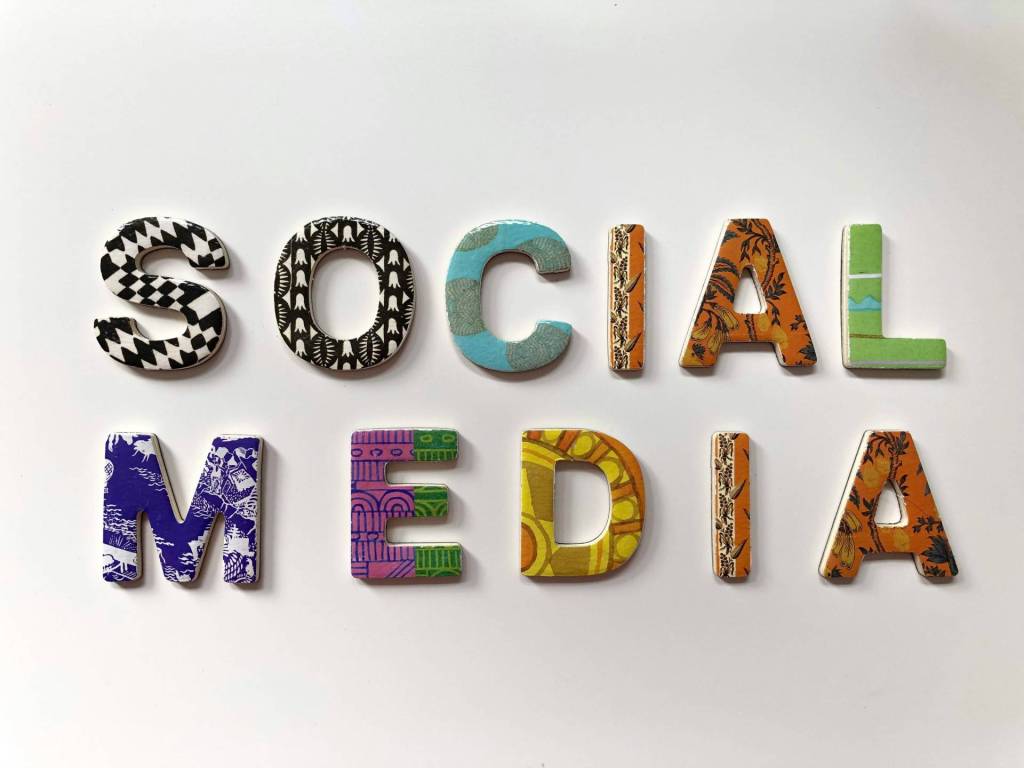In today’s competitive business world, building a personal brand has become essential for professionals looking to establish themselves as industry leaders and gain a competitive edge. A personal brand is more than just a logo or a catchy slogan; it is a representation of who you are, what you stand for, and the value you bring to the table. It is your unique story and the essence of your professional identity.
Why Building a Personal Brand Matters
A well-crafted personal brand can open doors to new opportunities, attract potential clients and employers, and enhance your professional credibility. It allows you to differentiate yourself from the competition and position yourself as an expert in your field. Your personal brand is what people think of when they hear your name or see your online presence, and it can have a significant impact on your career trajectory.
Authenticity: The Foundation of a Strong Personal Brand
authenticity is the cornerstone of a strong personal brand. Building an authentic brand requires self-reflection and a deep understanding of who you are and what you stand for. It means staying true to your values and beliefs and aligning your actions with your personal brand.
To get started, take the time to reflect on your unique strengths, experiences, and passions. What makes you stand out? What do you believe in? What are your core values? These insights will serve as the foundation for your personal brand and help you create a compelling narrative that resonates with your target audience.
Defining Your Personal Brand
Defining your personal brand involves crafting a clear and concise message that encapsulates who you are, what you do, and the value you offer. It should reflect your unique story, expertise, and the problems you solve for your audience.
Your Unique Value Proposition
Your unique value proposition (UVP) is what sets you apart from the competition and makes you valuable to your target audience. It is the unique combination of skills, knowledge, and experiences that only you can offer. To define your UVP, ask yourself:
- What are your areas of expertise?
- What problems can you solve for your audience?
- What makes you different from others in your field?
By answering these questions, you can identify your unique value proposition and leverage it to build a strong personal brand.
Crafting Your Brand Story
Your brand story is the narrative that ties your personal brand together. It should be authentic, compelling, and relatable to your target audience. Your story should showcase your journey, highlighting the challenges you’ve overcome, the lessons you’ve learned, and the expertise you’ve gained along the way.
To craft your brand story, consider the following elements:
- Your background and experiences: Share your educational background, professional experiences, and any relevant achievements that demonstrate your expertise.
- Your values and beliefs: Highlight the values and beliefs that drive your work and guide your decision-making.
- Your mission and vision: Clearly articulate your mission and vision, including what you hope to achieve in your industry and the impact you want to make.
- Your unique perspective: Share your unique insights and perspectives on the industry, showcasing what makes you stand out from others.
By weaving these elements together, you can create a compelling narrative that resonates with your target audience and strengthens your personal brand.
Building Your Personal Brand: 5 Key Steps
Now that you understand the importance of building a personal brand and have defined your unique value proposition and brand story, it’s time to take actionable steps to build and cultivate your personal brand. Here are five key steps to get you started:
Step 1: Establish a Consistent Online Presence
In today’s digital age, your online presence plays a crucial role in shaping your personal brand. Establishing a consistent online presence across various platforms allows you to reach a wider audience and showcase your expertise.
Building a Professional Website
A professional website is the cornerstone of your online presence. It serves as a centralized platform where you can share your brand story, highlight your expertise, and showcase your portfolio or work samples. Your website should be visually appealing, easy to navigate, and optimized for search engines.
Utilizing Social Media Platforms
Social media platforms offer powerful tools for building and promoting your personal brand. Choose platforms that align with your target audience and industry, and consistently share valuable content that positions you as an expert in your field. Engage with your audience, respond to comments and messages, and actively participate in relevant industry discussions.
Step 2: Cultivate Thought Leadership through Content Creation
Creating valuable and relevant content is an effective way to establish yourself as a thought leader in your industry. By sharing your expertise and insights through blog posts, articles, videos, or podcasts, you can position yourself as a go-to resource for valuable information.
Identifying Your Content Niche
To effectively build your personal brand through content creation, it’s essential to identify your content niche. Focus on a specific area within your industry where you can provide unique insights and valuable information. This will help you stand out from the competition and attract a dedicated audience.
Consistently Publishing High-Quality Content
Consistency is key when it comes to content creation. Develop a content calendar and commit to consistently publishing high-quality content. This will not only establish your credibility but also help you build a loyal following of individuals who trust your expertise.
Leveraging Different Content Formats
Experiment with different content formats to cater to different learning preferences and reach a broader audience. Consider creating blog posts, videos, infographics, podcasts, or webinars to diversify your content and engage with your audience in various ways.
Step 3: Engage and Collaborate with Your Audience
Building a personal brand is not just about self-promotion; it’s also about building meaningful relationships with your audience and industry peers. Engage with your audience through comments, direct messages, and social media interactions. Actively participate in industry events, conferences, and online communities to expand your network and collaborate with like-minded professionals.
Participating in Industry Conversations
Join industry-specific discussions, forums, and social media groups to share your expertise, learn from others, and build relationships with key influencers in your field. Engage in thoughtful conversations, ask questions, and contribute valuable insights to establish yourself as a respected authority.
Collaborating with Peers and Influencers
Collaborating with other professionals in your industry can significantly enhance your personal brand. Look for opportunities to collaborate on projects, co-author articles, or participate in panel discussions or podcasts. These collaborations can help expand your reach, expose you to new audiences, and reinforce your credibility.
Step 4: Continuously Develop Your Skills and Expertise
To maintain a strong personal brand, it’s crucial to continuously develop your skills and expertise. Stay up-to-date with industry trends, attend conferences and workshops, and pursue relevant certifications or advanced degrees. By investing in your professional development, you demonstrate your commitment to excellence and ensure your brand remains relevant and competitive.
Seeking Learning Opportunities
Identify learning opportunities that align with your personal brand and professional goals. This could include attending industry conferences, enrolling in online courses, or participating in webinars and workshops. Continuously expanding your knowledge and skills will not only enhance your expertise but also fuel your content creation efforts.
Seeking Feedback and Mentorship
Seek feedback from trusted colleagues, mentors, or industry experts to gain valuable insights on areas for improvement. Actively seek mentorship from individuals who have achieved success in your industry. Their guidance and support can help you refine your personal brand and navigate your career path more effectively.
Step 5: Monitor and Adapt Your Personal Brand
Building a personal brand is an ongoing process that requires continuous monitoring and adaptation. Regularly assess your personal brand’s effectiveness, track your online presence, and gather feedback from your audience. Use this information to make informed decisions and refine your personal brand strategy.
Monitoring Your Online Reputation
Monitor your online reputation by setting up Google Alerts and regularly searching for mentions of your name or brand. This allows you to address any negative feedback or misinformation promptly and maintain a positive online presence.
Analyzing Your Brand’s Impact
Regularly analyze the impact of your personal brand through metrics such as website traffic, social media engagement, and audience feedback. This data will provide valuable insights into the effectiveness of your brand strategy and help you make data-driven decisions to optimize your personal brand.
Adapting to Changing Trends and Audience Preferences
Stay informed about industry trends and changes in audience preferences. Continuously adapt your personal brand strategy to align with these shifts, ensuring that your brand remains relevant and resonates with your target audience.
Common Mistakes to Avoid in Personal Branding
Not Being Consistent
Inconsistency can confuse your audience and dilute your brand’s impact. Ensure your messaging, visual identity, and values align across all platforms and interactions. Consistency helps in building a recognizable and reliable brand, making it easier for your audience to understand and remember who you are and what you stand for.
Ignoring Your Audience
Your personal brand should be audience-centric. Ignoring your audience’s needs, questions, and feedback can lead to disengagement. Listen actively to your audience, engage in meaningful conversations, and provide content that adds value to their lives. This approach not only builds trust but also strengthens your relationships with your audience.
Over-Promoting Yourself
While it’s important to showcase your achievements and expertise, over-promotion can turn your audience off. Balance self-promotion with content that benefits your audience, such as educational posts, industry insights, and helpful tips. Focus on how you can help solve their problems or improve their lives rather than just highlighting your own successes.
Neglecting Professionalism
Professionalism should be a cornerstone of your personal brand. This includes using high-quality visuals, maintaining a professional tone in your communications, and ensuring your content is free from errors. Professionalism also extends to how you interact with others online and offline, reflecting respect, courtesy, and integrity.
Failing to Network
Networking is crucial for expanding your personal brand’s reach and influence. Avoid the mistake of operating in isolation. Engage with industry peers, mentors, and thought leaders through social media, industry events, and professional groups. Networking can open new opportunities, provide valuable insights, and enhance your brand’s credibility.
Lacking Authenticity
Authenticity is key to a successful personal brand. Pretending to be someone you’re not or adopting a persona that doesn’t reflect your true self can lead to mistrust and disengagement. Be honest about your experiences, share your true passions, and let your genuine personality shine through. Authentic brands attract loyal followers.
Not Defining Your Niche
A well-defined niche helps you stand out in a crowded market. Without a clear focus, your personal brand may appear vague and unfocused, making it harder to attract and retain a dedicated audience. Identify your unique strengths, passions, and expertise to define your niche, and tailor your content and messaging to address the specific needs and interests of your target audience.
Underestimating the Power of a Story
Storytelling is a powerful tool in personal branding. It can make your brand more relatable, memorable, and engaging. Share your personal journey, including the challenges you’ve faced and how you’ve overcome them. Use stories to illustrate your points and connect with your audience on an emotional level.
Forgetting About Personal Development
Your personal brand should evolve as you grow professionally and personally. Neglecting ongoing learning and self-improvement can cause your brand to become stagnant. Invest in yourself by acquiring new skills, staying updated with industry trends, and seeking feedback for continuous improvement. A dynamic personal brand is more appealing and relevant to your audience.
Not Monitoring Your Brand
Failing to monitor what’s being said about you online can lead to missed opportunities and potential reputation damage. Regularly check your social media mentions, Google alerts, and online reviews to understand public perception of your brand. Address negative feedback constructively and highlight positive testimonials to build and maintain a positive online reputation.
By being aware of these common mistakes and actively working to avoid them, you can build a more robust and effective personal brand that resonates with your audience and supports your professional goals. Remember, personal branding is a journey of self-discovery and communication, requiring consistency, authenticity, and a commitment to continuous improvement.
In Conclusion
Building a successful personal brand is a journey that demands dedication, time, and consistent effort. It begins with a deep dive into self-reflection to uncover your unique value proposition. This is your personal signature, the very core of your brand, which distinguishes you from others in your field. Crafting your brand story is the next crucial step, allowing you to connect with your audience on a more personal level, sharing your journey, challenges, and triumphs.
Establishing a consistent online presence is indispensable in today’s digital-first world. Your online platforms are the windows through which your audience peers into your professional life. They should reflect who you are and the value you provide. Alongside, creating and sharing valuable content establishes your authority and showcases your expertise, drawing your audience closer and building trust.
Engagement with your audience transforms passive viewers into active participants in your brand’s journey. It fosters a community and creates loyal followers. Meanwhile, personal and professional development ensures that your brand continues to evolve and stay relevant, keeping you at the forefront of your industry.
The task of monitoring and adapting your personal brand is perpetual. The digital landscape is ever-changing, and so are the perceptions and needs of your audience. Staying attuned to these changes and responding to feedback is essential for maintaining a dynamic and resilient personal brand.
Remember, personal branding is far from a static or one-time effort; it is a continuous process of growth, learning, and adaptation. It requires a steadfast commitment to not just portray yourself in a certain light, but to live out the values and promises your brand stands for.
Embark on this journey today with intention and mindfulness. As you cultivate and nurture your personal brand, you will find it not only sets you apart from the competition but also opens doors to opportunities and professional relationships that can propel your career forward. Watch as your personal brand flourishes, bringing with it growth, success, and fulfillment in today’s fast-paced digital landscape.
FAQ: Developing a Personal Brand
How do you develop a personal brand?
Developing a personal brand involves understanding your unique strengths, values, and passions. Start by defining what you stand for and how you want to be perceived. Create content that reflects your expertise and personality. Engage with your audience consistently across platforms. Seek feedback and refine your approach as you learn what resonates with your audience.
What are the 4 P’s of personal branding?
The 4 P’s of personal branding are:
- Perception: How others see you. This is the image and reputation you build.
- Positioning: How you differentiate yourself from others. This is about finding your niche.
- Presentation: How you communicate your brand. This includes your visuals and content.
- Personalization: Making your brand relatable and authentic. This is about showing your human side.
How do I create my own brand?
Create your own brand by:
- Identifying your unique attributes and strengths.
- Defining your target audience and what you can offer them.
- Developing a consistent message and visual style.
- Building an online presence through a website and social media.
- Networking and building relationships with others in your field.
What are the 4 C’s of personal branding?
The 4 C’s of personal branding are:
- Clarity: Being clear about who you are and what you offer.
- Consistency: Maintaining a consistent message and image across all channels.
- Constancy: Being regularly visible and active with your audience.
- Confidence: Believing in your value and conveying it confidently.
What are the 5 P’s of personal branding?
The 5 P’s of personal branding are:
- Positioning: Establishing your unique stance.
- Products/Services: Offering something valuable.
- Packaging: Presenting yourself professionally.
- Promotion: Sharing your expertise widely.
- Partnerships: Aligning with other brands or individuals.
What are the 5 E’s of personal branding?
The 5 E’s of personal branding are:
- Expertise: Showcasing your skills and knowledge.
- Experience: Sharing your personal and professional experiences.
- Expression: Communicating your brand through your unique voice.
- Engagement: Interacting with your audience and community.
- Exposure: Gaining visibility through various channels.
What are the 7 pillars of personal branding?
The 7 pillars of personal branding are:
- Authenticity: Being genuine and true to yourself.
- Expertise: Demonstrating your knowledge and skills.
- Visibility: Being seen and recognized in your field.
- Influence: Having an impact on others.
- Networking: Connecting with people and building relationships.
- Value: Offering something valuable to others.
- Consistency: Maintaining a consistent brand across all platforms.
Is personal branding narcissistic?
Personal branding is not inherently narcissistic. It’s about understanding and communicating your unique value and how you can help others. However, it can become narcissistic if it’s solely focused on self-promotion without providing value to others.
What are the ABCD’s personal branding?
The ABCD of personal branding refers to:
- Authenticity: Being true to yourself.
- Branding: Building a recognizable and consistent image.
- Communication: Effectively conveying your message.
- Differentiation: Standing out from the competition.
Featured Image Credit: Photo by Rodion Kutsaiev; Unsplash – Thank you!
















